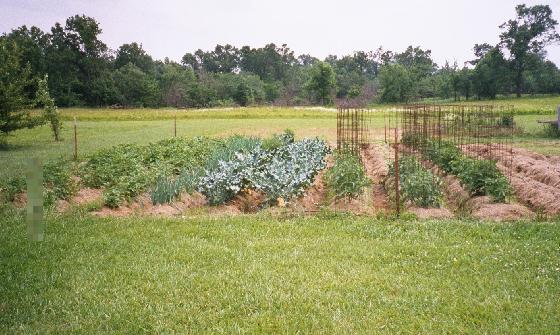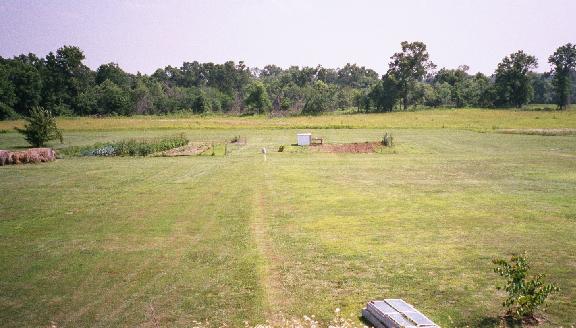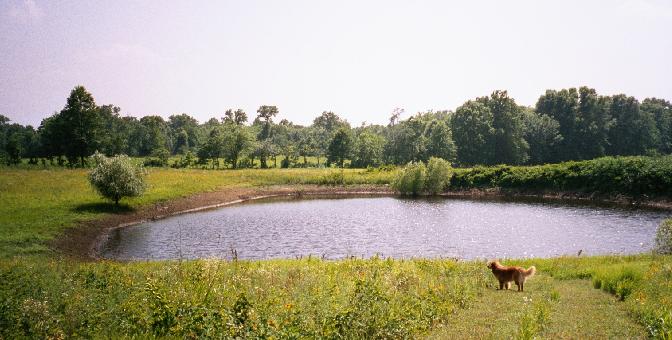|
In Southwestern Missouri we begin our gardening in early
March. The potatoes go in as close to St. Patrick's Day as the weather will allow. The brassica plants are put in during the second week of April. We have found the earlier these plants go in the sooner they are harvested and that's good, especially
if it is before the cabbage moths find our garden!. The 25 x 25 asparagus patch
gives up its first shoots about the middle of April and gives us the first real taste of spring! Ummmm! The patch continues to produce asparagus well into June or early July.
The tomato plants are the last to go in and will usually begin producing by 4th of July, just in time for
summer picnics. And if you like to make pickles, this is just the place for you.

As the winters are usually mild through December, a fall garden of spinach,
chard and other greens can be started in August and September.
There are two garden spots shown here, one to the left (current) and one
to the right (future). The future garden spot is used as a pasture for the egg laying range chickens. In alternating years the plots will be turned under and the old garden used as the new garden and the chickens
will be moved to the other garden. Does this make sense? This helps us maintain a natural organic soil, provides fertility
and keeps the earthworms fed. We prefer to hand dig our garden to keep the worms
and microbes alive and growing.
| View standing on the roof looking south. |

|
| Note the mobile chicken tractor. |
The chickens and guineas provide eggs and fertilize the garden as well
as keeping the tick and grasshopper population under control. Once a year we
raise a batch of fryers to put in our freezer and trade with our neighbors. These
are moved around the yard area and keep our grass bright green.

|
| Buck inspects the irrigation line. |
The solar pump provides irrigation during the dry months. We pump water from the ponds using the sun's energy, and since the water is free, its an economical way
to keep the garden watered even in the driest conditions.
|




